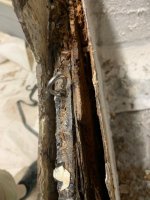78 Thompson
Seaman
- Joined
- Jun 2, 2017
- Messages
- 74
I have a 78 Thompson I am putting a new floor in, and want to put a layer of fiberglass over the top, so no water can get to the plywood. I'm thinking a layer, maybe 1/8 inch or less thick and tie it back into the sides of the boat, like it was originally.
I don't have much experience with fiberglass and am totally confused on what kind of resin to use epoxy or polyurethane. I know epoxy is more expensive, so do I really need it? I'm guessing they used poly when the boat was made? Is there any problems with adhesion to the plywood with poly? Many years ago I tried to fiberglass over pressure treated ply and found out that it didnt bond together.
So bottom line I need some suggestions on what to use, what brands are the best, what are the most economical, what to use for cloth or mat, not really sure what the difference is, if any?
also I'm guessing I have about 10'x2' sections on both sides of the engine and gas tank. So how much resin would I approximately need, to cover the complete floor?
I don't have much experience with fiberglass and am totally confused on what kind of resin to use epoxy or polyurethane. I know epoxy is more expensive, so do I really need it? I'm guessing they used poly when the boat was made? Is there any problems with adhesion to the plywood with poly? Many years ago I tried to fiberglass over pressure treated ply and found out that it didnt bond together.
So bottom line I need some suggestions on what to use, what brands are the best, what are the most economical, what to use for cloth or mat, not really sure what the difference is, if any?
also I'm guessing I have about 10'x2' sections on both sides of the engine and gas tank. So how much resin would I approximately need, to cover the complete floor?




















